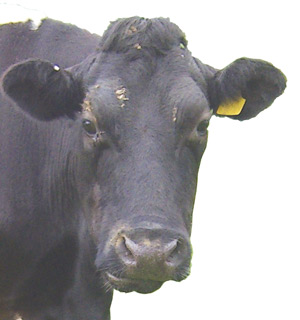|
|
|
Cow's milk intolerance and why it is so common |
Registered nurse food intolerance specialist, Mary Roe, believes that it is the frequency with which people eat certain foods, especially cow's milk, that leads them to develop intolerances. |

When I test* my food intolerance patients I find that 89% of the children and 49% of the adults are intolerant to cow's milk. It is not, as I explain to them, that there is anything intrinsically wrong with cow's milk products, just that they eat and drink too much of them. The figures that I have for Chinese and Japanese people living in the UK, but still eating according to their own traditions is that their most common food intolerances are rice and soya. Thai people become intolerant to rice and coconut more commonly than anything else. Almost without fail people develop an intolerance to the foods that they eat most frequently. So the child who only drinks blackcurrant squash and consumes it several times over the course of every day might become intolerant to blackcurrant. Because apple is used as a natural sweetener in so many under 5s foods (biscuits, fruit purees, fruit flakes,) apple is a very common intolerance in that age group. A third of the adults that I test have an intolerance to either tea or coffee. How often do they drink these drinks? You guessed it! Several times every day! Which leads me back to cow's milk intolerance....according to my data the most common intolerance. So many people who come to me for a test say that they avoid milk, but actually still eat butter, cheese and yogurt. They then think that because they did not see any symptomatic improvement, that they do not have a dairy intolerance. Even enlightened GPs who might suspect a food intolerance do not have the time or knowledge in a six minute appointment to impart all the nuances of a dairy free diet. The importance of COMPLETE avoidance of foods or drinks to which one reacts cannot be over stressed. Many people do not become asymptomatic until they cut out every last bit of the food to which they are intolerant. Others may feel markedly better when they reduce the amounts that they eat / drink. But even for those people they will gain massive benefit from COMPLETE AVOIDANCE FOR THREE WHOLE MONTHS. In over 90% of my clients, a three month exclusive avoidance of ANY food to which they are intolerant may enable them to be able to eat that food again in moderation. Three months complete avoidance of even the smallest amount of that food 'calms' their body's reactions so that, in due course, it will tolerate the food as long as it is not consumed too often - maybe only twice a day - milk in a couple cups of tea for example. I have noticed, however, with increasing frequency over the last four or five years, that a number of people develop a new intolerance to one of the possible alternatives that I advise for them. Since over 90% of my clients develop an intolerance to their most frequently consumed foods or drinks ? usually ones that they consume three or more times daily ? it is not surprising that when they substitute a product such as soya for cow's milk and then consume that very frequently, they develop an intolerance to that substitue food. Therefore I now routinely advise my cow's milk intolerant clients to be very careful about how often they consume the foods below. SOYA So for a while I advised the client to use a sunflower based dairy-free margarine instead of a soya based one. But that path can also be fraught with difficulty... SUNFLOWER GOAT'S, SHEEP'S and BUFFALO products. COCONUT And remember.... Lactose and cow's milk are not the same thing. Lactose is milk sugar found in cow's milk. If someone cannot digest lactose, it is because they are not producing enough LACTASE enzyme. So, effectively, they are suffering form a Lactase deficiency. The LACTOFREE products that are now easily available are suitable for someone with a lactase deficiency, as lactase is added to the milk. BUT they will not work at all for someone with intolerance to cow's milk. SO WHAT SHOULD A COW'S MILK INTOLERANT PERSON DO?
Over the years I have found that it is not the total amount of a food drink consumed that leads to an intolerance, but the frequency with which it is used?.even if the amount consumed is only ever very small. Mary Roe - Registered Nurse Specialist in food intolerance * Mary uses a Dietx machine (a newer verison of a Vega machne) to test for intolerances. The testing protocol is based on the theories of Dr. Reinhold Voll, a German doctor in the 1950's. Dr Voll developed a device to measure the skin's resistance on traditional acupuncture points all of which points had a standard reading for all healthy people. He therefore suggested that any readings lower than normal at those points suggested that there was fatigue or degeneration in the tissues associated with that point. The Dietx/Vega machine measure these changes, via a small sensor, when the client is brought into contact with foods of other substances to which they might react. August 2015 |












